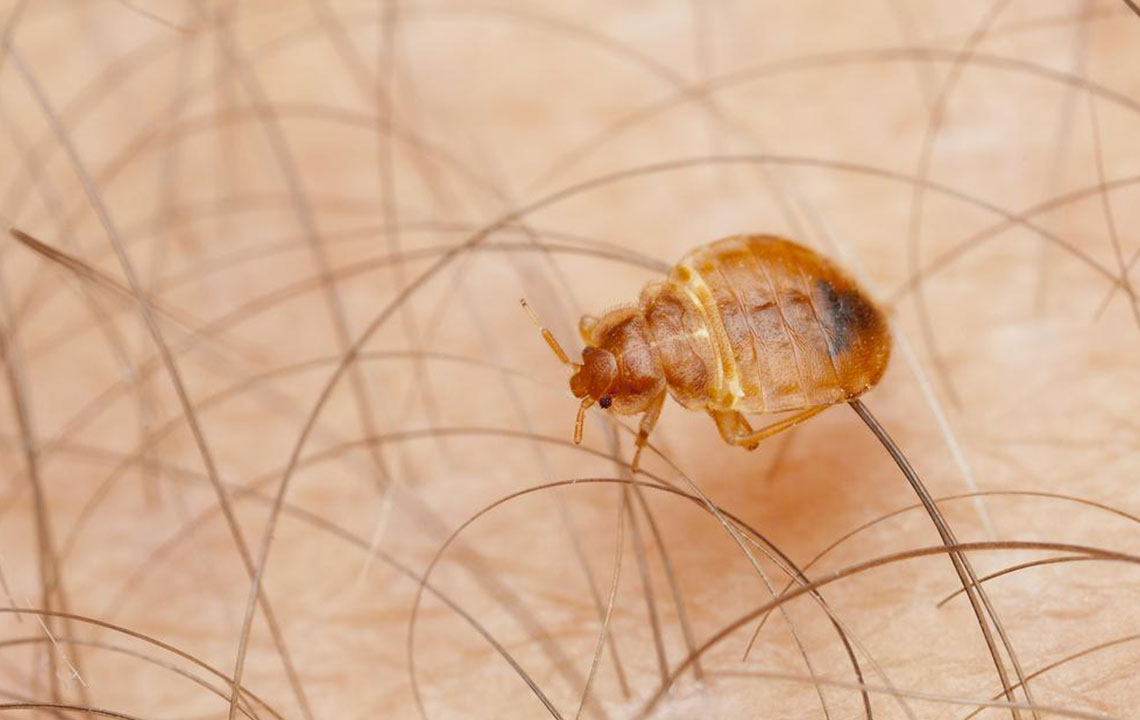10 Home Remedies to Get Rid of Bed Bugs

Bed bugs are very common, and they disrupt our sleep. They mainly feed on human blood and are found in warm temperature. They can even feed on animals such as cats, dogs, and other pets but it is the human blood that helps them to grow and reproduce.
Bed bugs typically bite on hands and the head area, which is painless. Bed bugs are typically active when you are asleep and in the night and stay for about 15-20 minutes after which they shy away. Bed bugs are found in bedrooms where there are loads of furniture and bed sheets with spots and smears. This is because used furniture is a potential source for infestation. If you have bed bugs, here are simple home remedies for bed bugs that you can take help from:
Keep your surroundings clean
Bed bugs are attracted to dark and unclean spaces as they can shy away easily. By using a vacuum cleaner as a home remedy for bed bugs you can keep your place, especially your bedrooms clean to avoid infestation. Old furniture attracts bed bugs making them comfortable to live and grow.
Freeze items
Bed bugs are found in warm temperature in your houses. Therefore, to avoid them from growing or reproducing, you keep the house cool as they cannot survive in cold temperatures.
Encase mattresses and pillows
Another home remedy for bed bugs is to encase the mattresses and pillows. This will prevent them from entering and staying on the mattress and pillows are covered. Woven material ensures the death of bed bugs naturally.
Salt
It is believed that salt kills bed bugs the same way it kills snails and slugs. This is because salt has the substance to absorb fluid from the bodies of insects thereby dehydrating them resulting in the death of infestation. Spreading of salt on furniture or cracks in the house is an easy remedy to avoid bed bugs.
Double-sided tape
Another smart way of preventing bed bugs at home is by using double-sided tape. You can stick double-sided tape under the bed and in furniture areas, and bed bugs will get stuck when they come to attack you in the nights.
Baking soda
Baking soda just like salt is a home remedy for bed bugs. Baking soda can dehydrate the bed bugs and at times even act as a natural poison to them. Therefore, you can prevent the bugs to enter, reproduce, and grow in number by spreading some baking soda on furniture or places that are cracked.
Tea tree oil
Another substance that helps prevent bed bugs is tea tree oil. Tea tree oil is known for its antimicrobial effects, which helps get rid of not only bed bugs but also bacteria, fungi, and viruses. Therefore, you can apply tea tree oil on beds, furniture, and between the crack areas as it not only prevents bed bugs but also kills them.
Mint leaves
The antimicrobial properties of mint leave help preventing bed bugs. Therefore, you can keep the bugs at bay by spreading mint leaves around the bed or on old furniture.
Lemongrass
Lemongrass is yet another simple method to kill bed bugs. Bed bugs cannot survive the odor of lemongrass as it increases acidic conditions within them. This results in the natural death of bed bugs.
Lavender oil
Lavender oil is another DIY spray that helps prevention of bed bugs. The antiparasitic properties of lavender oil destroy insect’s eggs thereby stopping the bugs to grow in number. Spraying of lavender oil on areas where bed bugs attack easily is a simple and easy remedy.
It is very easy for bed bugs to spread due to their fast breeding and reproduction rate. However, prevention of bed bugs is simple and requires little attention. The basic home remedy for bed bugs is to keep your house clean to avoid them completely as bed bugs are attracted to dark and dirty corners in the house.
To prevent bed bugs completely, there are bug bombs that are foggers and can give a thorough cleaning of the house.
At times bed bugs can’t be treated by simple home remedies, and there are over-the-counter products that are used in such severe cases. One such way is by taking preventive measures from the pest control that would recommend the use of deep-cleaning and use of sprays which is monitored by their team members. They offer professional help and ensure that every bug is removed from your house.
It is not very easy for you to avoid bed bugs, however with constant attention and keeping your house clean and tidy; you can keep these away and enjoy a good night’s sleep.


